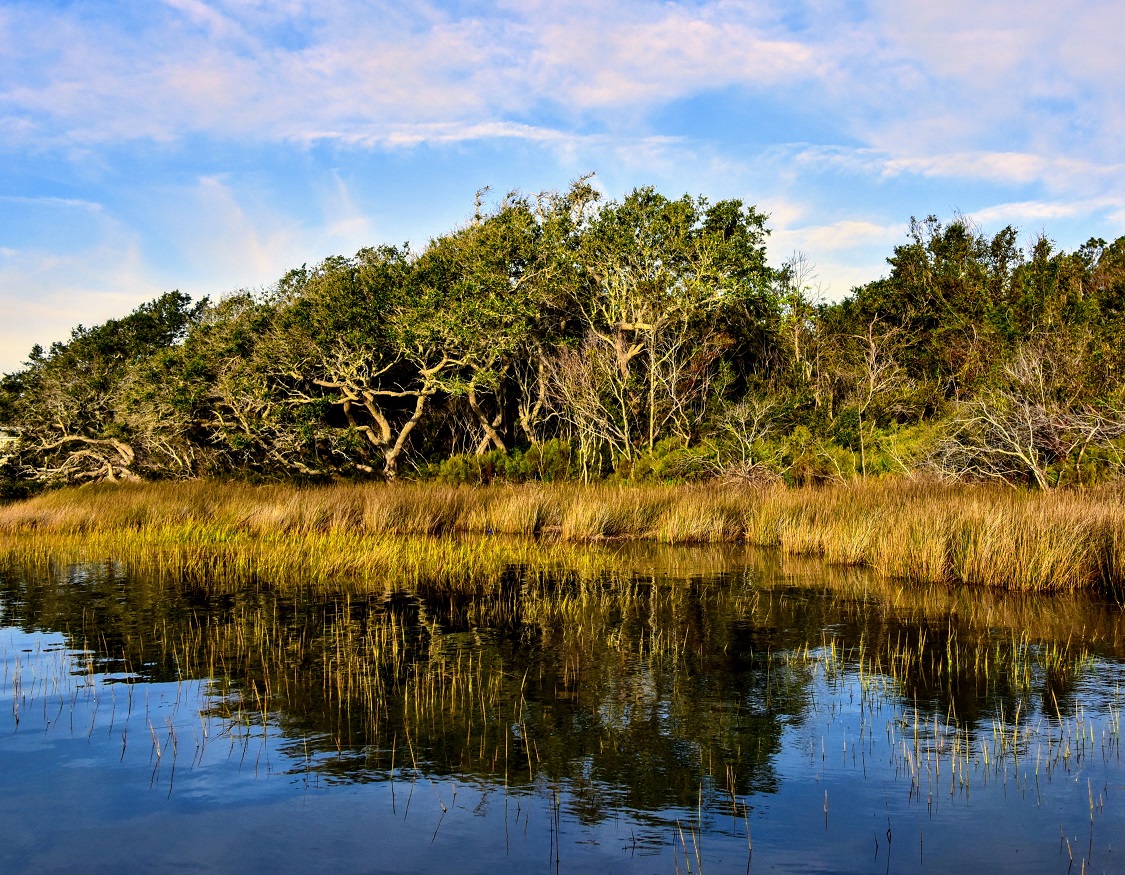
A grant from the Environmental Enhancement Program will be used to protect a shoreline on Bogue Sound in western Carteret County.
The North Carolina Coastal Federation will receive $185,653 from the program administered by the state Attorney General to build 850 feet of living shoreline.
Supporter Spotlight
“North Carolina’s beautiful shoreline is one of our greatest assets,” said Attorney General Josh Stein in a statement. “I am pleased to support this project to maintain and preserve it.”
The federation acquired the 76-acre Bogue Sound site in March and turned 66 acres over to the county to be used for a nature park and water access. The federation plans to build on its 10 acres a Center for Coastal Protection and Restoration for events, education and offices.
The salt marsh on the property is eroding from both storms and boat waves, threatening beautiful live oak trees located along the shoreline.
“We are thrilled to receive this grant,” said Dr. Lexia Weaver, Coastal Scientist for the federation. “We are eager to work with Carteret County to protect this shoreline from future erosion while creating habitat that will provide more fish and shellfish. The living shoreline will demonstrate a more effective, economical and long term technique to protect shorelines from erosion when compared to bulkheads and seawalls.”
Supporter Spotlight
Living shorelines are environmentally friendly shoreline stabilization techniques that reduce shoreline erosion while also protecting and restoring coastal marshes, according to the federation. The project also will provide a site to showcase natural, alternative shoreline stabilization techniques which will serve as an educational tool to promote living shorelines along the coast.
The Environmental Enhancement Grant program was established with funds from a 25-year agreement between the Attorney General and Smithfield Foods in 2000 that provides $2 million per year for environmental projects across the state. The program has awarded over $25 million in environmental grants since 2002. The funds have been used for wetland restoration, land acquisition, storm-water remediation, stream stabilization, and buffer installations, among many other projects.







